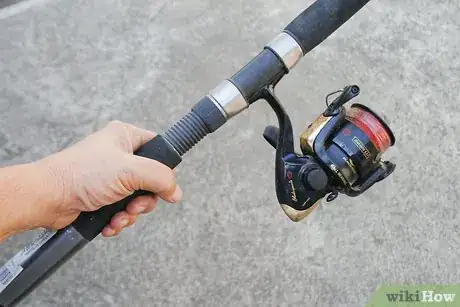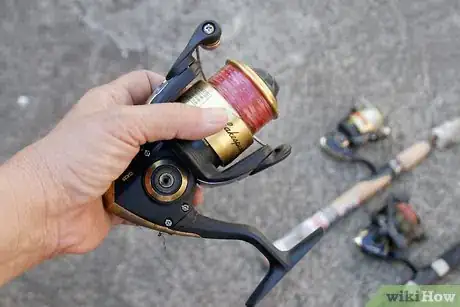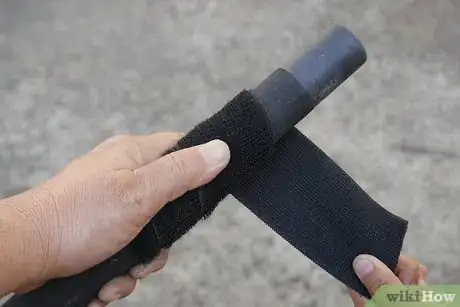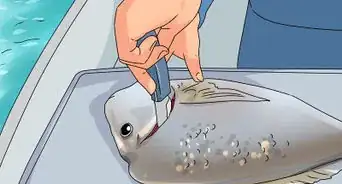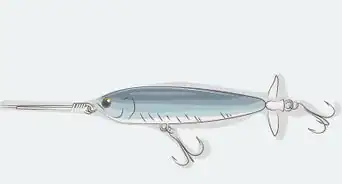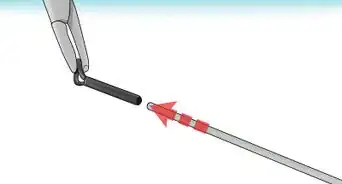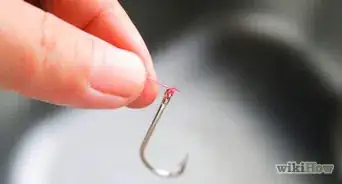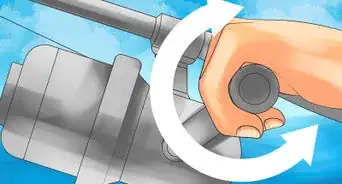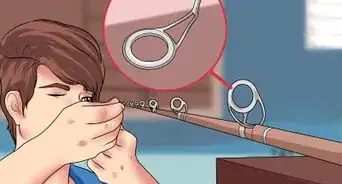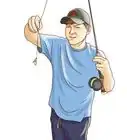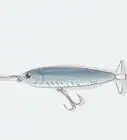X
wikiHow is a “wiki,” similar to Wikipedia, which means that many of our articles are co-written by multiple authors. To create this article, 16 people, some anonymous, worked to edit and improve it over time.
This article has been viewed 40,074 times.
Learn more...
Fishermen often take steps to balance their rods. A balanced fishing rod is easier to cast and handle for long periods of time, reducing fatigue in the hands and forearms. Many professional anglers also believe that a balanced rod helps improve sensitivity in the rod tip, making it easier to detect fish striking the bait. If you want to know how to balance a fishing rod, follow these guidelines.
Steps
-
1Determine whether your rod and reel really need to be balanced.
- Rigs using moving-bait presentations don't need to be balanced because they are fished tip down. A balanced rig is more important when fishing with still-presentation lures, like worms and jigs.
- These baits are fished with the rod tip at a 10 o'clock position. A balanced fishing rod keeps the angler's hands in a relaxed position that allows them to detect small changes in line tension. It also reduces fatigue from hours of casting and holding the rig upright.
-
2Try a number of rod-and-reel combinations before you buy.
- Beginners may outfit their fishing pole with a spincast reel, because they are easiest to use. Baitcast reels provide fishermen with better casting accuracy and are powerful enough to drag heavy lures through underwater vegetation. Both types mount on the top of the rod, in the reel seat. Make sure your rod is designed for these types of reels to ensure proper balance.
- Spinning reels mount under the rod and must be matched with specially designed spinning rods for optimum effectiveness.
- When you've matched your rod and reel, test the rig's balance. If you have a spincast or baitcast set-up, try to balance it horizontally on your index finger. Place your finger along the underside of the rod, just in front of the reel. If the tip edges downward, the rod is too heavy for the reel. If the handle tips downward, choose a lighter reel to achieve optimum balance.
- If you're testing a spinning rod for balance, try to hold it with your index finger right where the reel is seated in the rod. If the set-up is neutral, the rod should hold a horizontal plane while you're holding it.
- Few set-ups will have perfect balance. The key is to find a combination that doesn't quickly tip in one direction or the other when you're trying to balance it on your finger.
Advertisement -
3Add additional weight to the butt end of your rod handle to improve balance.
- Some anglers put a weighted cap on their rod handle to move the balance point away from the rig down to the handle.
- A bottom-heavy rod allows a fisherman to propel heavier baits farther and also reduces arm strain due to repetitive casting. Manufacturers say the "zero-weight" balance provided by the weighted caps also improve rod sensitivity, enabling fishermen to feel even sight change in the line tension.
Advertisement
About This Article
Advertisement
